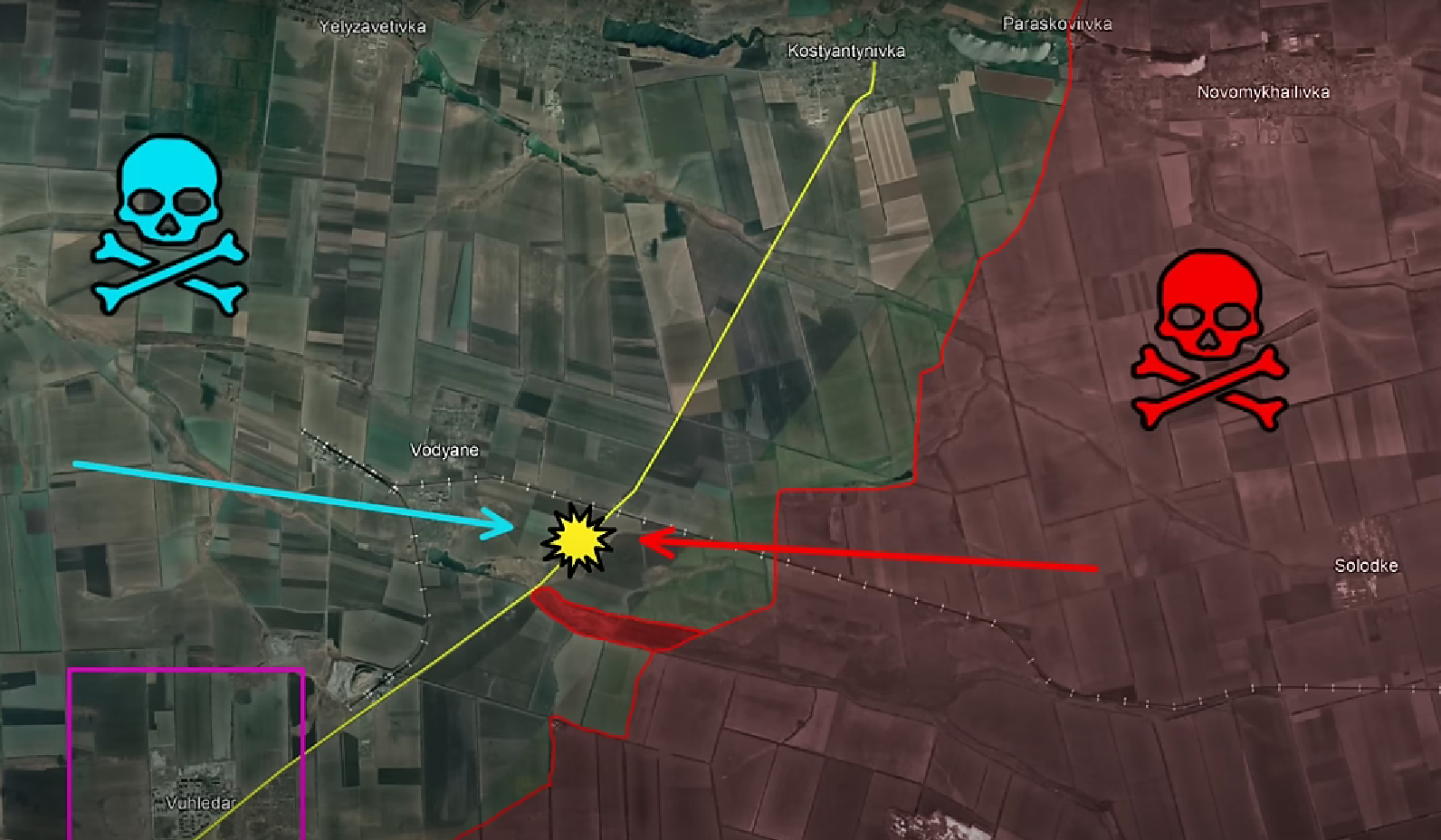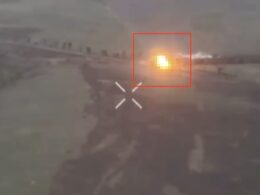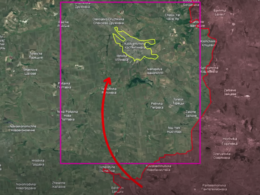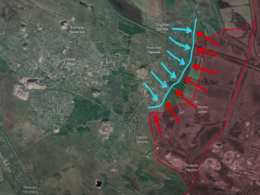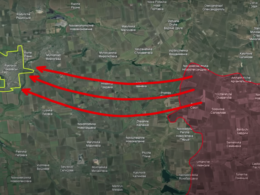Day 861: 24 July
On 24 July, there are a lot of updates from the Kurakhove direction.
Here, Russian forces regrouped following the lack of success with their intensified attacks against Kostiantynivka. They launched a renewed offensive, shifting their focus to a different direction in the region to disrupt Ukrainian logistics and achieve a significant breakthrough.
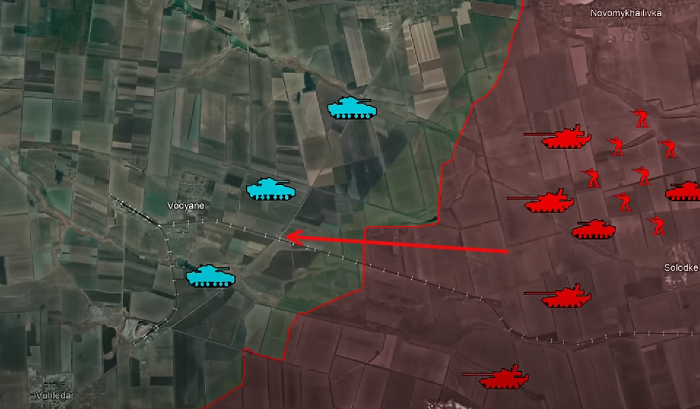
Aware of the tactical objectives the Russians aimed to accomplish, the Ukrainians methodically countered their campaigns at each stage of the plan.
The main Russian objective in this area is to reach the local road T-05-24 to disrupt Ukrainian logistics between Kostiantynivka and Vuhledar. Even though there is another supply route to Vuhledar, T-05-24 was the preferred road that the Ukrainian forces used up to this point to deliver munitions, medicine, food and rotate troops to the defenders of this stronghold that has already withstood many mechanized Russian attacks and cost them heavy losses.
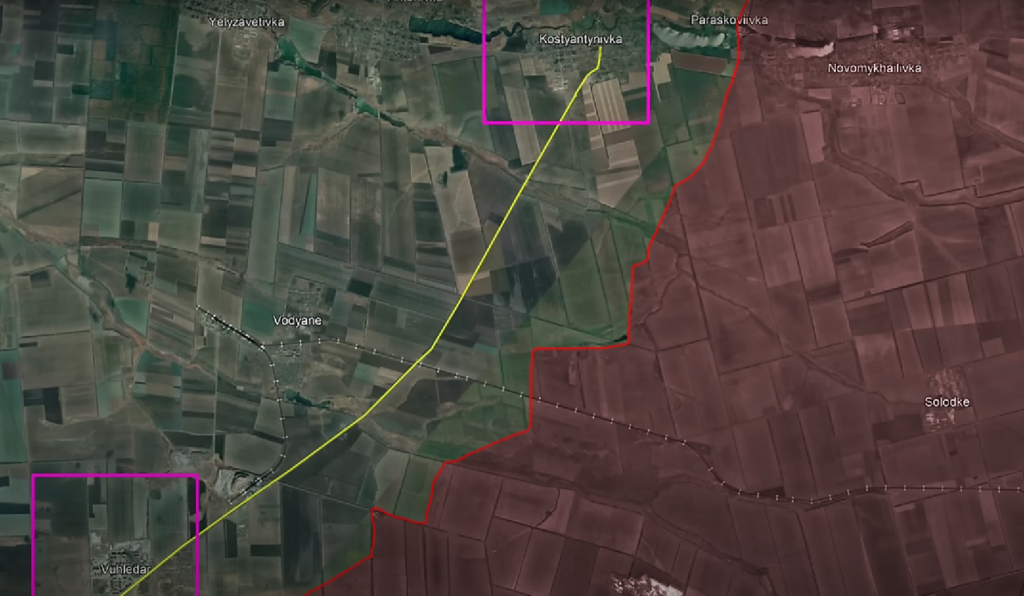
This is why breaking the supply route to Vuhledar can be the decisive step for the Russians to finally capture this Ukrainian fortress or at least isolate it and force the defenders to leave it.
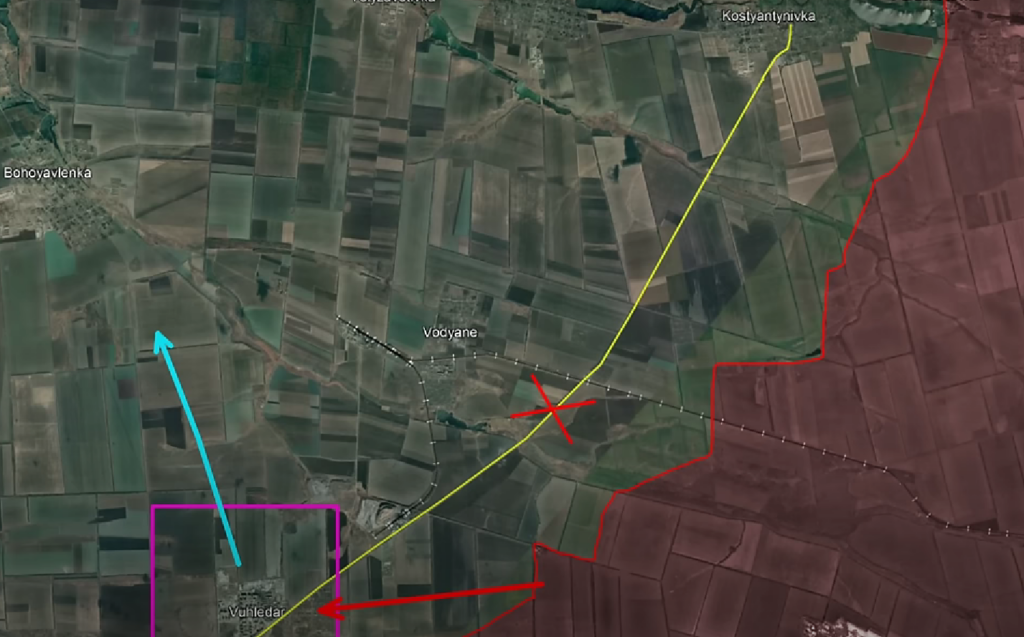
Ukrainians used the short, tactical pause on this part of the frontline to further sustain their local air superiority by continuing to hunt Russian air defense assets within the effective range of their available weapon systems. Geolocated footage published by Ukrainian military bloggers shows how a Russian S-300V air defense system is engaged by a Ukrainian HIMARS launching rockets with cluster munition.
One of the most detailed videos of such strikes shows how these highly effective Western munitions target various system elements separately but repeatedly. Consequently, the images show how the rocket launchers, radar, and command center are all destroyed.
Simultaneously, both sides relaunched ground attacks against each other around Kostiantynivka. Ukrainian drone operators from the 79th Air Assault Brigade published several geolocated videos showing how they target enemy tanks, armored personnel carriers, and infantry with FPV drones and grenades dropped by drones. They tried to further weaken deliveries for Russians on the frontline by conducting strikes in the rear against Ural supply trucks.
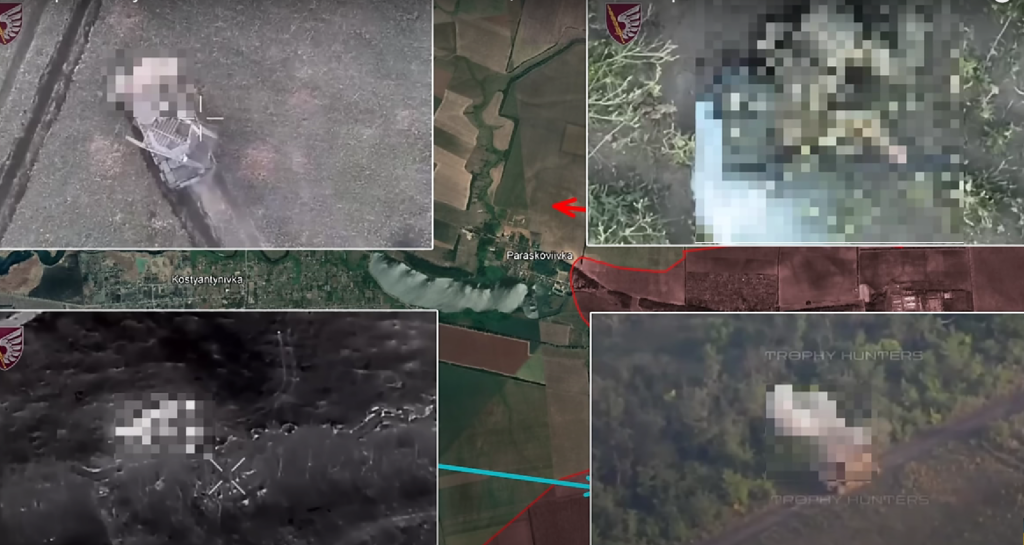
One of the most exciting clips is courtesy of the Ukrainian special forces battalion OPFOR, which released how they operate to clear a tree line just south of the village.
Shortly after the first shot is fired, a Ukrainian tank is struck by a Russian kamikaze drone and set ablaze. In a remarkable display of composure, a Ukrainian tank crewman jumps onto the burning vehicle and begins extinguishing the fire.
Moments later, the tank is seen retreating to safety, thanks to the soldier's brave and decisive actions, which saved the crew's lives and preserved valuable equipment.
The intense conditions created by the Ukrainians around Kostiantynivka forced the Russians to attempt another surprise maneuver further south near the village of Vodyane. Various military analysts from both sides were alarmed by the significant advances made by Russian forces toward the crucial T-05-24 ground line of communication.
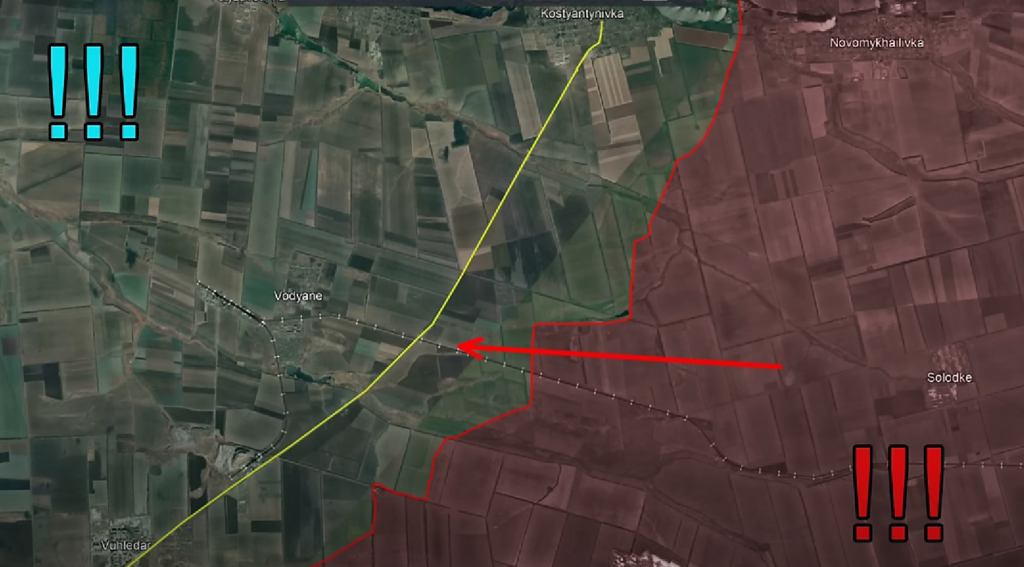
Geolocated footage published in the last few days shows a Russian armored vehicle rapidly advancing along a tree line up to a point near the road, several kilometers from the previously assessed frontline. The rate and ease of the vehicle's advance suggest that Russian forces likely held additional positions in field areas east of Vuhledar and were able to provide cover for the vehicle as it advanced.
Satellite imagery shows additional destroyed Russian vehicles along the same tree line, further confirming that Russian forces have advanced in this area. Russian military bloggers have long emphasized that the foremost tactical objective in the Vuhledar area is for their forces to interdict this road and disrupt Ukrainian supplies to Vuhledar.
One claimed that he expects intensified offensive efforts from Russian forces to support this tactical objective in the coming days. This claim was partially confirmed by an official statement from the Ukrainian General staff, which reported that the number of conducted Russian ground attacks near both Kostyantinovka and Vodyane remains high even if all of them are successfully rebuffed for the time being.
This is visually confirmed by several geolocated videos from the area showing Ukrainian defenders destroying enemy mechanized assaults with drones and artillery.
Overall, the Russians adjusted their approach in the Kurahove direction to finally seize the local supply route to Vuhledar.
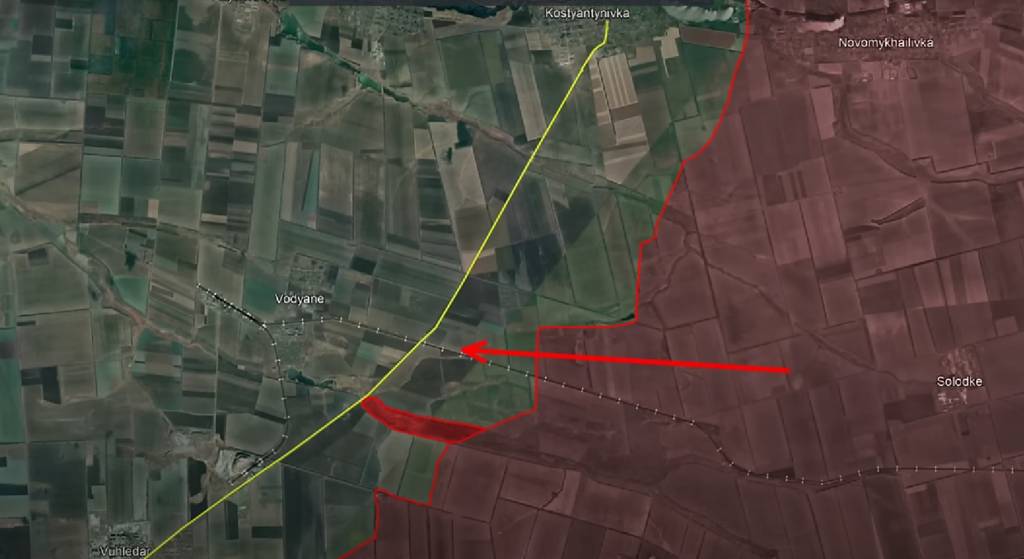
This small city in the Donetsk region has become a symbol over the last two and a half years, representing not only Ukrainian resistance but also the heavy losses suffered by the Russians during their repeated assaults. By nearly establishing control over the crucial roads, with battles still raging, there is widespread anticipation that the Russians will attempt another push in this direction, even if it comes at a deadly price. The strategic importance of Vuhledar and its supply routes cannot be overstated, and both sides are prepared to incur significant casualties to achieve their objectives in this fiercely contested area.
In our daily frontline report, we pair up with the military blogger Reporting from Ukraine to keep you informed about what is happening on the battlefield in the Russo-Ukrainian war.
Read also:

